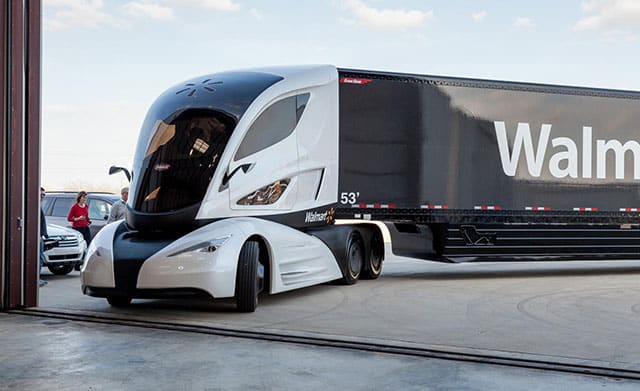When you hear the name Walmart, what comes to mind? Affordable prices? The convenience of one-stop shopping? Or perhaps the immense scale of operations that has made Walmart the world’s largest retailer? Walmart is all that and more—a symbol of innovation, efficiency, and the power of vision.
The story begins in 1962, when Sam Walton, born on March 29, 1918, in Kingfisher, Oklahoma, founded the first Walmart in Rogers, Arkansas. Walton’s dream was simple but ambitious: to offer goods at the lowest prices to help people live better lives. What started as a single store has grown into a global powerhouse with over 10,500 stores in 24 countries.
Let’s explore Walmart’s journey, its business strategy, and the lessons it holds for businesses worldwide.
Table of Contents
1. What is Walmart’s Business Strategy?
At the heart of Walmart’s success is its commitment to delivering value. Its strategy is built on providing Everyday Low Prices (EDLP), operational efficiency, and leveraging technology to serve customers better.
Walmart’s focus isn’t just on what it sells—it’s about how it operates. From supply chain mastery to customer-centric innovations, every aspect of Walmart’s strategy revolves around offering affordability and convenience.
Business Strategist Hirav Shah notes:
“A business that masters cost efficiency without compromising customer satisfaction holds the key to long-term success. Walmart exemplifies this balance perfectly.”
2. Types of Business Strategies Walmart Uses
Walmart employs a combination of strategies that have helped it dominate the retail landscape:
Cost Leadership
Walmart’s scale allows it to negotiate better prices with suppliers, translating into lower costs for customers.
Differentiation
Through innovations like self-checkouts, apps, and efficient logistics, Walmart creates a unique shopping experience.
Focus Strategy
Walmart targets value-conscious customers with its EDLP model.
Takeaway: Understanding customer needs and aligning strategies with them is essential for any business.
3. The Core Elements of Walmart’s Business Strategy
Walmart’s success lies in its attention to key elements that drive growth:
Pricing Strategy
Everyday Low Prices build trust and loyalty.
Supply Chain Mastery
From efficient warehousing to smart inventory systems, Walmart ensures its products are always available at the lowest cost.
Technological Integration
Walmart leverages technology like AI, RFID, and predictive analytics to streamline operations.
Hirav Shah reflects:
“The backbone of any successful business is its ability to innovate while staying true to its core values. Walmart does this exceptionally well.”
4. Walmart’s Competitive Edge
Walmart vs Amazon
The rivalry between Walmart and Amazon is a case study in modern retail competition. Both giants dominate their respective spaces—Walmart in brick-and-mortar retail and Amazon in e-commerce—but the lines are increasingly blurring as both enter each other’s domains.
Key Comparisons:
Pricing Strategies: Walmart’s Everyday Low Prices (EDLP) builds customer loyalty, while Amazon relies on dynamic pricing to adapt to market conditions.
Logistics Models: Amazon’s cutting-edge fulfillment network and same-day delivery set the bar, but Walmart leverages its physical store network for in-store pickup and local delivery.
Market Presence: While Amazon dominates online, Walmart’s unmatched physical presence gives it a competitive edge in hybrid shopping experiences.
Hirav Shah explains:
“Walmart’s hybrid approach of integrating its physical stores with digital convenience is a model that ensures resilience and relevance.”
Walmart vs Target
While Walmart and Target cater to different customer bases, their competition highlights the diversity in retail strategies:
Branding:
Walmart focuses on affordability, while Target leans toward an upscale, stylish shopping experience.
Pricing:
Walmart’s rock-bottom prices contrast with Target’s mix of competitive and premium pricing.
Customer Targeting:
Walmart serves a broad demographic, whereas Target focuses on urban and suburban shoppers looking for style and quality.
Hirav Shah observes:
“Both Walmart and Target show that success in retail isn’t about competing head-on—it’s about carving out your unique identity and audience.”
5. Walmart’s Global Expansion and Challenges
Walmart’s journey to becoming a global brand wasn’t without hurdles. While it thrived in markets like Mexico and China, it faced significant challenges in Germany and South Korea due to cultural and operational differences.
In India, Walmart made a strategic move by acquiring Flipkart, tapping into the booming e-commerce market. This acquisition showcased Walmart’s ability to adapt its strategy to local markets.
Hirav Shah observes:
“Global success demands flexibility and a deep understanding of local cultures. Walmart’s journey underscores the importance of learning from setbacks.”
6. Walmart’s Digital Transformation
To compete with Amazon, Walmart embraced e-commerce and omnichannel strategies. Its acquisition of Jet.com and investments in online grocery delivery have been pivotal.
Key Innovations in Digital Strategy:
- Walmart+ subscription service to rival Amazon Prime.
- Online grocery delivery integrated with its physical stores.
- Leveraging AI for personalized recommendations and inventory management.
Hirav Shah explains:
“Adapting to technological shifts isn’t optional—it’s essential. Walmart’s digital evolution ensures its relevance in a tech-driven world.”
7. Challenges and Criticisms
No empire is without its challenges, and Walmart has faced its share of controversies:
Labor Issues and Working Conditions
Critics have raised concerns about low wages, limited benefits, and working conditions for Walmart employees.
How Walmart Responds:
- Incrementally increasing minimum wages.
- Offering skill development programs to help employees advance.
Monopoly Concerns and Lawsuits
Walmart has faced accusations of monopolistic practices and clashes with local businesses in various markets.
How Walmart Addresses These Challenges:
- Collaborating with local players in international markets.
- Increasing transparency in its operations and supply chain.
Hirav Shah explains:
“Every giant business faces scrutiny, but the key lies in how it adapts and evolves to address these challenges.”
8. FAQs About Walmart’s Business Strategy

Q: What is Walmart’s core strategy?
A: Walmart’s core strategy is its Everyday Low Prices (EDLP) model, which focuses on delivering value to customers.
Q: How does Walmart use technology in its operations?
A: Walmart leverages AI, predictive analytics, and RFID for inventory management, logistics, and personalized shopping.
Q: What makes Walmart’s global strategy unique?
A: Walmart adapts its business model to local markets while maintaining global efficiency.
Q: How does Walmart compete with Amazon?
A: Walmart combines its vast physical store network with digital innovations to create a seamless shopping experience.
Final Thoughts: The Walmart Legacy

Walmart isn’t just a store—it’s a phenomenon. From Sam Walton’s vision to its global dominance, Walmart has redefined retail. Its commitment to low prices, innovation, and adaptability ensures that it remains a leader in the industry.
Hirav Shah concludes:
“Walmart’s story proves that a relentless focus on values and innovation can turn even the boldest dreams into reality.”
image courtesy – wallpapercave.com










